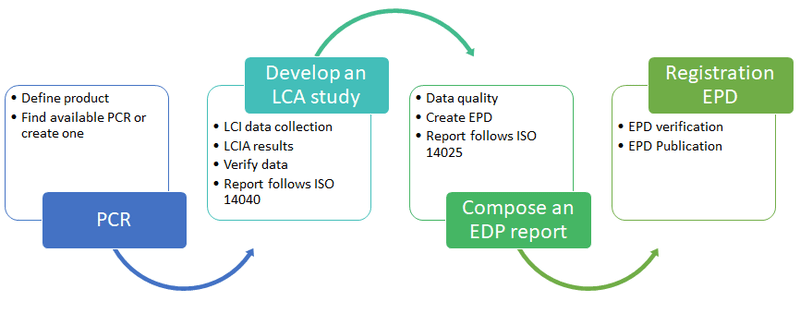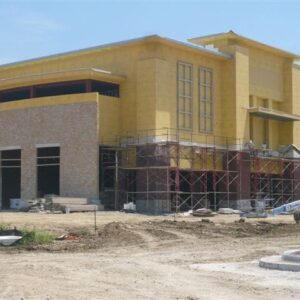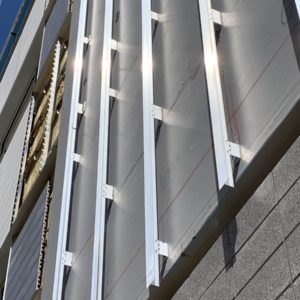Putting the definition of an Environmental Product Declaration (EPD) into layman’s terms is a bit of a challenge, with a plethora acronyms to get one’s head around. Certification provider SCS Global Services does an excellent job introducing the concept:

An EPD is an objective report based on life cycle assessment (LCA). It is used to communicate information about the potential environmental and human health impacts of a product. It’s like a nutritional label, stating what a product is made of and how it impacts the environment across its entire life cycle, from raw material extraction to disposal.
LCA measures the human health and the environment impacts associated with a product. It examines each stage in the life cycle of a product, including raw material extraction, manufacturing, transportation, use and maintenance, and disposal.
The EPD process can be thought of as a cradle to grave approach to analyzing the environmental impact of a product. Developing an EPD requires a complete LCA, which includes collecting, analyzing and verifying product data, creating the EPD, and getting independent third party verification and registration.
How an EPD is created
Per Wikipedia, “The first step in creating an EPD is defining the product, using the appropriate Product Category Rules (PCR). PCRs are specific rules and requirements verified by an independent, third-party panel. A Life Cycle Inventory (LCI) for the LCA must be verified and from reliable sources (for example, from a manufacturing facility). A Life Cycle Environmental Impact Analysis (LCIA) is performed by an LCA expert using software and a variety of assessment tools. The EPD is delivered as a document or report following a series of verification reviews; it is then ready for registration and publication.”

“Framework for creating an Environmental Product Declaration (EPD)” by Dvecheve is licensed under CC BY-SA 4.0.
EPDs can apply to many construction product categories, such as coatings, flooring, insulation, ceilings, waterproofing, windows, doors, among many other product categories. Stay tuned for our next blog post where we talk about how EPDs apply to credits in LEED certification.


